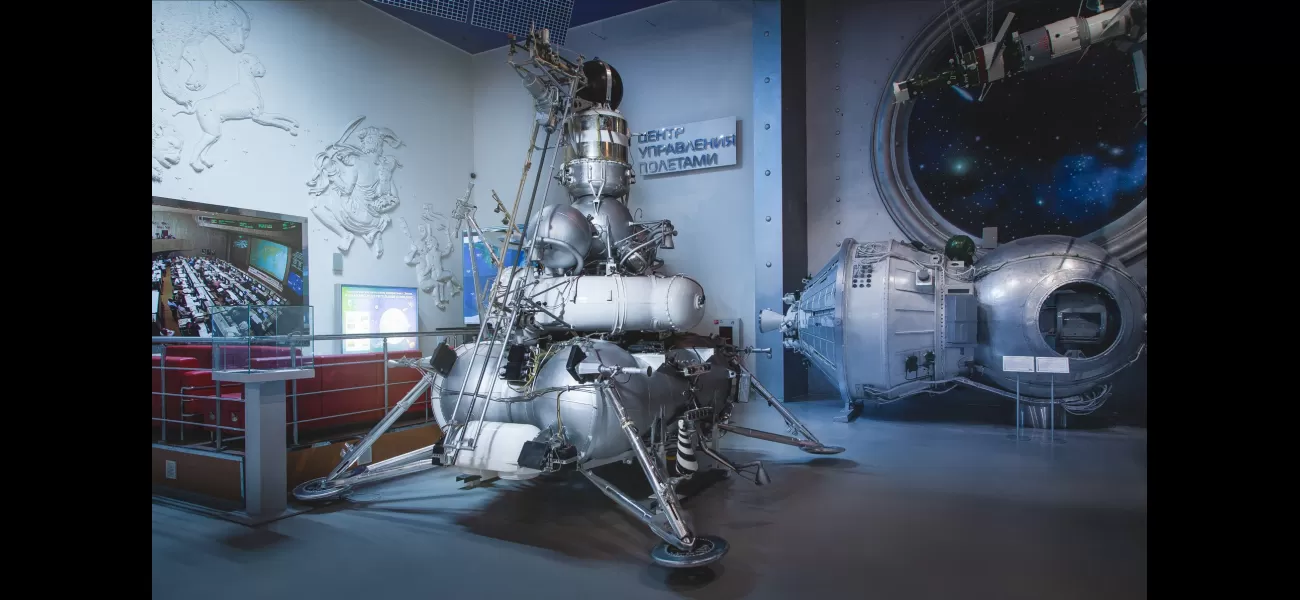50 years since Russia's last lunar excavation.
In 1976, Luna 24 landed on the Moon and returned with samples, but no Russian mission has been successful since.
August 18th 2024.

In 1976, a groundbreaking event occurred in the realm of space exploration. A Russian spacecraft, known as Luna 24, successfully landed on the Moon's Mare Crisium. This highly advanced robotic probe wasted no time in commencing its mission, which involved drilling deep into the lunar surface to extract samples.
After touching down on August 18, 1976, Luna 24 spent a mere day on the Moon before heading back to Earth. But in that brief period, it managed to retrieve valuable samples from our only natural satellite. These samples proved to be a crucial addition to our understanding of the solar system and the vast wonders of the universe.
While this was not the first time that such a feat had been accomplished - both American Apollo missions and Soviet Luna landers had brought back a total of 400kg of lunar material for study - it was the third Soviet mission to do so. And what followed was a significant gap of almost five decades before China's Chang'e 5 mission claimed the title of the "last moon digger" in 2020.
But what caused this prolonged pause in lunar exploration? As interest in space exploration spread to other areas, the focus shifted away from the Moon. Despite budget cuts and debates about the value of investing such vast amounts of money in space exploration, Russia continued to make strides in this field. In 1971, they launched the world's first space station, and in 1986, they successfully assembled the world's first modular space station, Mir, in orbit. This station remained in service until 2001, serving as a research lab for a decade-long uninterrupted period.
The collapse of the Soviet Union in 1991 brought about a change in plans, and Russia decided to collaborate with the USA on the International Space Station instead of launching a second Mir. As a result, the Moon took a back seat in the world of space exploration until interest was reignited in the new millennium. It has been almost 50 years since humans last set foot on the lunar surface, but with NASA's upcoming Artemis missions, that is about to change as they plan to send the first woman and first person of color to the Moon.
But what about Russia's efforts since the Luna 24 mission? The Luna program was revived by Russia's space agency, Roscosmos, with plans to land another spacecraft on the Moon last year. This mission aimed to be the first to reach the South Pole of the Moon and investigate the presence of water ice. However, the spacecraft encountered technical difficulties and crashed onto the lunar surface, much to the disappointment of key consultant Mikhail Marov, who had hoped to see a revival of Russia's lunar program.
Despite this setback, there are still plans for more Moon landings and sample collection. NASA views the Moon as a 4.5-billion-year-old time capsule, preserved in the vacuum of space, and intends to establish a long-term presence there. Similarly, Russia has also expressed its intention to send cosmonauts to the Moon for the first time, building on their previous success of landing an unmanned spacecraft. President Vladimir Putin has assured that the work will continue, acknowledging that space travel always comes with its uncertainties.
However, the reality is that Moon missions are incredibly costly, and Russia is currently involved in a major conflict with Ukraine. This may have put a temporary pause on the glory days of their space program, but the dream of "moon digging" is still very much alive.
After touching down on August 18, 1976, Luna 24 spent a mere day on the Moon before heading back to Earth. But in that brief period, it managed to retrieve valuable samples from our only natural satellite. These samples proved to be a crucial addition to our understanding of the solar system and the vast wonders of the universe.
While this was not the first time that such a feat had been accomplished - both American Apollo missions and Soviet Luna landers had brought back a total of 400kg of lunar material for study - it was the third Soviet mission to do so. And what followed was a significant gap of almost five decades before China's Chang'e 5 mission claimed the title of the "last moon digger" in 2020.
But what caused this prolonged pause in lunar exploration? As interest in space exploration spread to other areas, the focus shifted away from the Moon. Despite budget cuts and debates about the value of investing such vast amounts of money in space exploration, Russia continued to make strides in this field. In 1971, they launched the world's first space station, and in 1986, they successfully assembled the world's first modular space station, Mir, in orbit. This station remained in service until 2001, serving as a research lab for a decade-long uninterrupted period.
The collapse of the Soviet Union in 1991 brought about a change in plans, and Russia decided to collaborate with the USA on the International Space Station instead of launching a second Mir. As a result, the Moon took a back seat in the world of space exploration until interest was reignited in the new millennium. It has been almost 50 years since humans last set foot on the lunar surface, but with NASA's upcoming Artemis missions, that is about to change as they plan to send the first woman and first person of color to the Moon.
But what about Russia's efforts since the Luna 24 mission? The Luna program was revived by Russia's space agency, Roscosmos, with plans to land another spacecraft on the Moon last year. This mission aimed to be the first to reach the South Pole of the Moon and investigate the presence of water ice. However, the spacecraft encountered technical difficulties and crashed onto the lunar surface, much to the disappointment of key consultant Mikhail Marov, who had hoped to see a revival of Russia's lunar program.
Despite this setback, there are still plans for more Moon landings and sample collection. NASA views the Moon as a 4.5-billion-year-old time capsule, preserved in the vacuum of space, and intends to establish a long-term presence there. Similarly, Russia has also expressed its intention to send cosmonauts to the Moon for the first time, building on their previous success of landing an unmanned spacecraft. President Vladimir Putin has assured that the work will continue, acknowledging that space travel always comes with its uncertainties.
However, the reality is that Moon missions are incredibly costly, and Russia is currently involved in a major conflict with Ukraine. This may have put a temporary pause on the glory days of their space program, but the dream of "moon digging" is still very much alive.
[This article has been trending online recently and has been generated with AI. Your feed is customized.]
[Generative AI is experimental.]
0
0
Submit Comment





